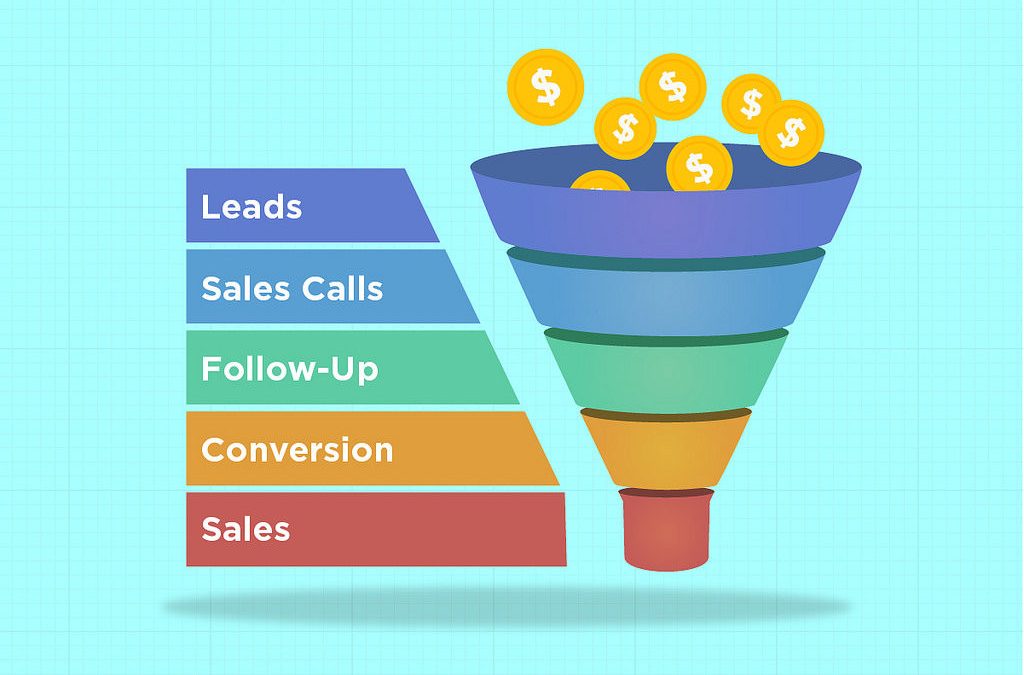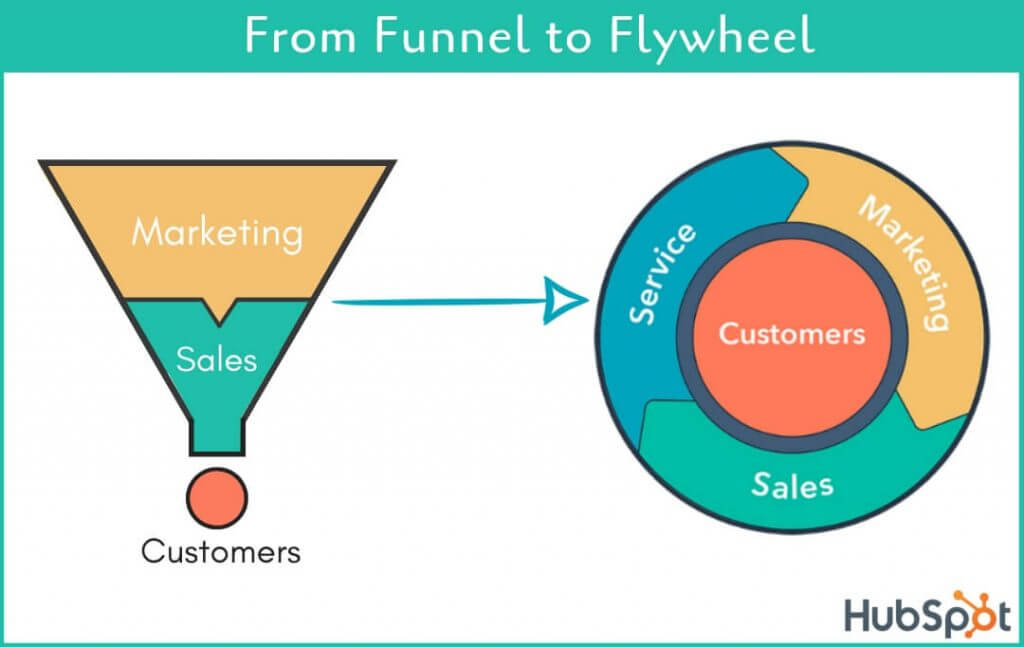Are you trying to optimize your sales process? Working to empower your sales team to achieve better results?

The answer lies in frictionless selling.
Frictionless selling is a way of rethinking sales to effectively reduce friction and create more convenient, engaging experiences for both buyers and sales representatives.
Frictionless selling prioritizes buyer-seller collaboration versus buyers being sold "at" ... an experience no B2C or B2B customer wants to experience.
In this blog post, we’ll discuss why frictionless selling drives great results and how you can incorporate this new approach into your sales model.
Let's get started.
The Sales Funnel Is an Outdated Model
If you work in sales, you’re probably familiar with the sales funnel and how it works.

At the top of the funnel, you generate a large number of leads. A smaller proportion of these leads engage with your company, and an even smaller proportion of those who engage convert to an actual customer.
But take a closer look and you’ll realize there are several ways in which the funnel doesn’t accurately represent how sales work.
First and foremost, when you use a funnel, you only get output as long as you’re continuously feeding in input. When you stop pouring into your funnel, you stop getting output from the bottom of the funnel.
In real life, this isn’t true. Let's say you write an evergreen article on SEO strategy. Six months down the road, this article might still be bringing you leads and potential clients — even though you’re no longer actively promoting it.
Additionally, when you use a funnel, whatever collects at the bottom of the funnel doesn’t affect the top.
But in real life, this isn’t the case. People who have made their way down the bottom of your funnel (i.e. your customers) have a huge impact on the people at the top.
If someone leaves you a glowing review on a third-party review site and your prospects read this review, it could nudge them into scheduling a product demo or asking for a quote from your company.
Why You Should Use the Flywheel Model Instead of the Funnel
Instead of thinking of your sales operation as a funnel, visualize it as a flywheel, which is a machine that stores rotational energy.

If you add force, the flywheel spins. Add more force and it spins faster. A flywheel will keep on spinning unless there’s enough friction to slow it down, therefore you can look at each rotation of the flywheel as the growth of your company.
Now, to grow your company — and get your flywheel to rotate faster — you can either add force to the flywheel or remove friction.
In terms of sales, adding force involves setting higher sales targets, hiring more reps, or telling your reps to make more calls each day. This is pretty straightforward, and you’re probably already doing everything you can to add more force.
Removing friction, on the other hand, is where most companies fall short. So it’s helpful to look for processes and items to troubleshoot so you stop slowing down your sales.
Here, we’re talking about poor customer experiences, sub-par products, and more.
What is frictionless selling?
Frictionless selling is selling in a way that creates the utmost convenience for your customers. B2C companies are great at doing this; B2B companies, not so much.
Of course, you’ll never be able to achieve 100% frictionless selling, but the goal here is to remove as many hurdles as possible. Once you do this, you’ll make your reps’ output more fruitful, and this will have a significant impact on their close rates and won deals.
The Frictionless Selling Framework
According to HubSpot’s frictionless selling framework, there are three stages to frictionless selling:
-
Enable your team to spend more time selling.
-
Align your team with your target buyer.
-
Transform your team through a culture of learning.
Let’s take a closer look at each of these stages, and discuss specific tips you can apply in each stage.
1. Enable
In many sales teams, reps don’t know where to focus and may not be allocating their time and effort wisely. They rely on techniques such as lead scraping and cold calling, which are essentially no different from looking for a needle in a haystack.
Bearing this in mind, the sales manager or director’s job is to enable their team to prioritize their efforts and spend more time selling. They can do this by:
-
Scrutinizing your sales processes. Do these processes need to be updated? How can these processes be improved to maximize productivity?
-
Evaluating your sales tools and technologies. Are there any redundancies? Are there any gaps that are compromising the team’s effectiveness? Are there any integrations that the team should be relying on, but are not?
-
Taking a closer look at reps’ day-to-day activities. What tasks are reps spending the most time on? What are the most painful parts of the process? What entry-level tasks can be automated so that reps can focus on more important, revenue-generating activities?
Tip: Self-reporting (i.e. getting reps to provide feedback on what activities they spend the most time on) might be easy, but it isn’t always the most accurate.
For a more sophisticated solution, get your reps to start using a time tracker app such as HubStaff. This allows your team to improve their time management skills and to track their work hours more reliably and allows you to quickly step in to troubleshoot unproductive tasks or processes.
2. Align
Once you’ve enabled your team, the next step is to align them with your target buyer. The goal is to reduce friction and make it easy for your buyer to say “Yes!” to a sale.
You can do this by:
-
Ensuring that your team is available 24/7, instead of only providing support during working hours. Set up live chat on your website and hire freelancers from different countries to work as your customer service reps so you’re always available for prospects in different time zones.
-
Making it easy for your clients to schedule meetings with you. Use a tool such as Calendly to minimize long email chains.
-
Providing transparent pricing and discounts. The more open and upfront you are about pricing, the more trust you build with your prospect.
-
Making it simple for buyers to cancel. If you’re trying to lock your buyer into a two-year contract, that’s a major red flag.
Tip: Once you’ve implemented the suggestions above, you can find more ideas on how to align your team with your target buyer by trawling through your old customer inquiry emails.
For instance, if you realize that many folks have been writing in to ask whether your product can be integrated with Tool X, there’s clearly a demand for this. You might want to put in a request for your product team to work on that integration so that you can provide a better user experience for your customers.
3. Transform
The last stage of frictionless selling involves transforming your team through a company culture of learning.
Here, you’ll want to:
-
Stop using spreadsheets and start using more sophisticated data reporting tools that give you access to real-time data.
-
Provide new or struggling reps with playbooks and other training materials.
-
Encourage your reps to share their learnings and best practices with the rest of the team.
-
Spend less time on reporting and more time on sales coaching.
Tip: If you’re searching for a new data or analytics tool to use, get your reps in on the conversation! After all, they’ll be using this tool on a day-to-day basis, so you want their feedback on what features they need. Here’s a list of sales enablement tools to get you started.
At this point, if you’re feeling a tad overwhelmed, don’t be. No one’s asking you to make dozens of changes or transform your team overnight (in fact, that’s probably a bad idea, because it’ll confuse your team). Instead, just start with one thing, such as getting your team to use a time tracking app.
Figure out how you can enable your team to incorporate more tools and technologies, then take it from there on the road to frictionless selling.
Editor's Note: This post was originally written in December 2019 and has been updated for comprehensiveness.





![What is Enterprise Sales? [+ How It Differs From SMB and Mid-market Sales]](https://blog.hubspot.com/hubfs/Sales%20Enterprise.png)





